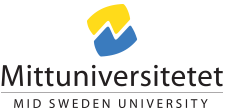Licentiate Seminar with Per Bergström
Så här gör du för att lägga till händelsen i din kalender
Cupcake ipsum dolor. Sit amet oat cake. Gummi bears tiramisu lollipop pie tootsie roll sesame snaps bonbon apple pie. Lemon drops jelly beans biscuit ice cream pastry.
Cupcake ipsum dolor. Sit amet oat cake. Gummi bears tiramisu lollipop pie tootsie roll sesame snaps bonbon apple pie. Lemon drops jelly beans biscuit ice cream pastry.
Cupcake ipsum dolor. Sit amet oat cake. Gummi bears tiramisu lollipop pie tootsie roll sesame snaps bonbon apple pie. Lemon drops jelly beans biscuit ice cream pastry.
Welcome to the Licentiate Seminar with Per Bergström, FSCN research centre, in Chemical Engineering. Per Bergström is industry employed PhD student from Essity Hygiene and Health AB.
The title of the Thesis
Modelling Mechanics of Fibre Network using Discrete Element Method
Supervisor
Prof. Tetsu Uesaka, Mid Sweden University
Co Supervisors
Charlotta Hanson, Essity Hygiene and Health AB
Prof. Kaarlo Niskanen, Mid Sweden University
External reviewer
Prof. Douglas W Coffin
Abstract
Low-density fibre networks are a fundamental structural framework of everyday hygiene products, such as baby diapers, incontinence and feminine care products, bathroom tissue and kitchen towels. These networks are a random assembly of fibres, loosely bonded and oriented in the plane direction.
Designing such a complex network structure for better performance, better use of materials and lower cost is a constant challenge for product designers, requiring in-depth knowledge and understanding of the structure and properties on the particle (fibre) level.
This thesis concerns the development of a computational design platform that will generate low-density fibre networks and test their properties, seamlessly, with the aim to deepening the fundamental understanding of the micromechanics of this class of fibre networks.
To achieve this goal, we have used a particle-based method, the Discrete Element Method (DEM), to model the fibres and fibre networks. A fibre is modelled as a series of linked beads, so that one can consider both its axial properties (stretching and bending) and transverse properties (shearing, twisting and transverse compression). For manufacturing simulations, we developed the models for depositing fibres to form a fibre network, consolidating the fibre network, compressing to make a 3D-structured network, and creating creping. For testing the end-use performance, we have developed two models and investigated the micromechanics of the fibre network in uniaxial compression in the thickness direction (ZD) and in uniaxial tension in the in-plane direction.
In the ZD-uniaxial compression of entangled (unbonded) fibre networks, the compression stress exhibits a power-law relationship with density, with a threshold density. During compression, the fibre deformation mode changed from fibre bending to the transverse compression of fibre. Accordingly, the transverse properties of the fibres had a large impact on the constitutive relation. By considering a realistic value for the transverse fibre property, we were able to predict the values of the exponent widely observed in the experimental literature. We have found that the deviation of the experimental values from those predictions by the earlier theoretical studies is due to the neglect of the transverse fibre property.
For tensile properties of bonded networks, we have investigated scaling of network strength with density and fibre–fibre bond strength. The network strength showed beautiful scaling behaviour with both density and bond strength, with exponents 1.88 and 1.08 respectively. The elastic modulus of the network, on the other hand, showed a changing exponent (from 2.16 to 1.69) with density in accordance with previous results in the literature. We have also reconfirmed that, with increasing density, the deformation mode changes from bending to stretching. The predicted results for both elastic modulus and strength agreed very well with experimental data of fibre networks of varying densities reported in the literature.
We have developed a computational platform, based on DEM, for accurately modelling a fibre network from its manufacturing process to product properties. This is a tool that allows a versatile design of materials and products used for hygiene products, providing a promising venue for exploring the parameter space of new material and process design.
